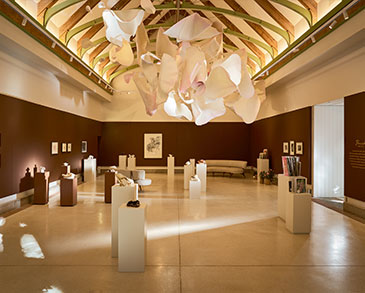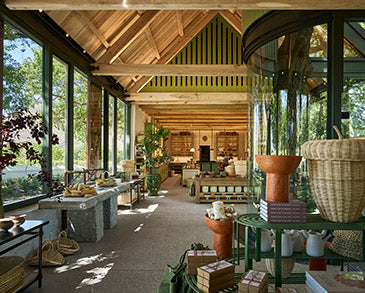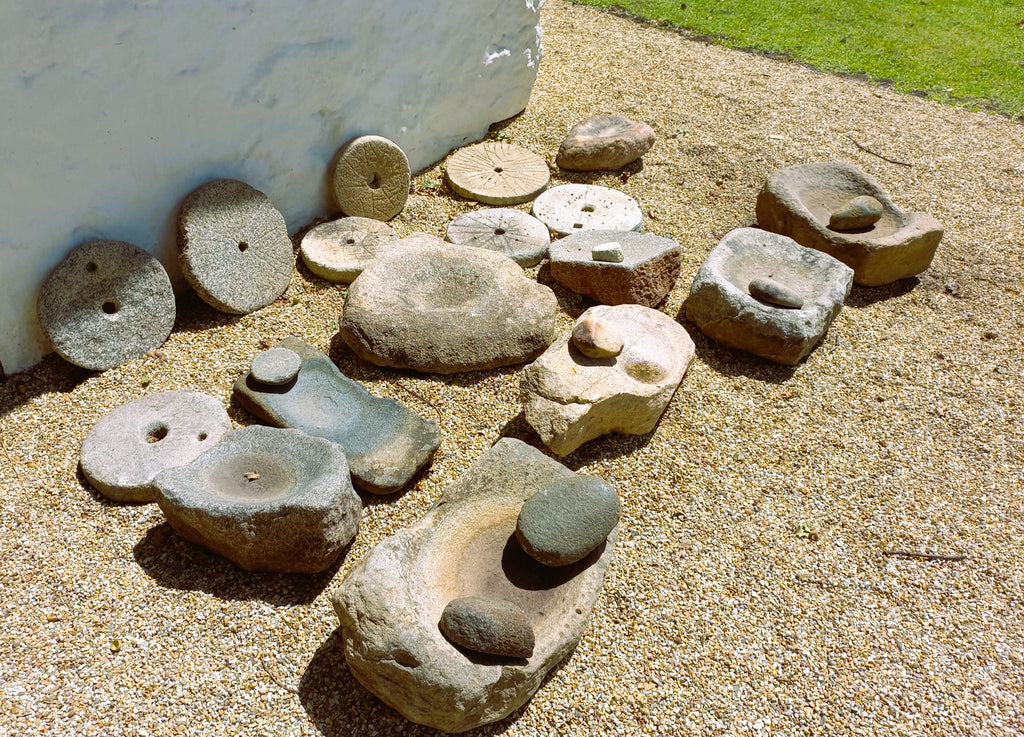The hand mill collection
The privately donated collection consists of hand mills from different cultures and different regions in South Africa, collected over the course of 80 years. The grain rubbers or mullers were found through the search and discovery of knowledgeable collectors with an abiding love for stones and rock. Not only did they understand the historical value of these grindstones, but they also appreciated them aesthetically and treasured the different types of stone and rock they came across. The collections grew from the collectors’ adventures through the country that led them to search for these artefacts where previous inhabitants might have left them.
The stones were discovered throughout Limpopo and Mpumalanga where former settlements might have been. Through experience, the collectors knew how to look under big, shady trees where women would have done their manual labour when living there. In the shadow of such a tree, they would occasionally find rocks that were different to others or had and unnatural bulge, which they would overturn to the happy discovery of a hollowed side of a grinding stone. These grinding stones where typically used by the Nguni people who spanned the eastern part of Limpopo and down into Eswatini, KwaZulu-Natal and the Eastern Cape. These milling stones were used for grinding sorghum and millet and sometimes maize for flour for baking bread, or for making porridge. Smaller specimens of grinders were also used for grinding salt crystals, herbs and even hemp – a sophisticated and often overlooked reason for these grinding stones. This process dates from hundreds of years ago and is still in use today in parts of KwaZulu-Natal, Eswatini and the Eastern Cape.
This collection is of particular importance because it supplements local milling history with these important hand-milling implements which preceded the more often emphasised water, wind or horse mills. The way in which these artefacts were used as part of the everyday life of many different southern African cultures, from the Khoi to the Basotho, and their being representative of the countries' cultural diversity, were always a special part of their appeal. It reminds us of how the ingenious indigenous people in Africa used these stones and made their living.
In the collection there are also horizontal hand-grinding stones of about 30 to 40 cm of a more mobile European design (known as a ‘gatskuur). This implement was used by placing two slabs on top of each other and turning the top stone with a branch, which resulted in the ground flour seeping to the sides of the grated edges. An example of this rotating hand mill can be seen at the La Motte Bakery. Also in the collection are two particularly striking granite stones from Springbok in the Northern Cape, which show how widely spread these mobile grinding stones could occasionally be found.
Another remarkable find in the collection is a slanted grinding stone where the women could kneel behind the stone and grind downwards, which was an easier grind for the wheat to flow down onto a piece of cloth or basin (see saddle-quern). These different types of hand mills indicate how milling has progressed and changed over time.
Coming from families who love history and culture, the donors of this collection were delighted to share this significant cultural historical collection with an establishment and public-access space where it can be seen and enjoyed by everybody. It is their hope that they will be respected and facilitate understanding of the various cultures that used them, so we can acknowledge the efforts of those who went before us. Their donation to La Motte was motivated by a personal friendship between the families of the donors and the owners of La Motte and their shared respect for culture and history, including a wider appreciation of the history of indigenous South African cultures. In this light, the donors said that it is ‘like passing your children on to good godparents’.














